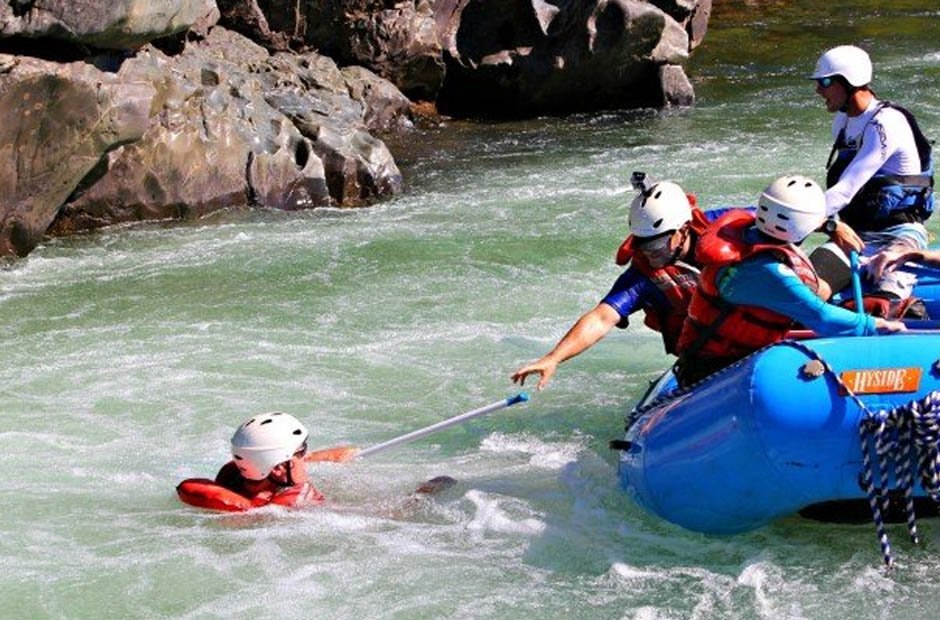Water rafting is an exciting adventure sport that blends the thrill of navigating swift rivers with the tranquility of natural surroundings. Whether you’re new to water rafting or a seasoned pro, ensuring safety on the water is crucial for a memorable and secure experience. Here are 7 Ways to Ensure a Smooth Ride on Your Next water Rafting Adventure:
1. Understand River Rapids: Know the Classifications
Before heading onto the water for rafting, take a moment to familiarize yourself with river classifications. Rapids are categorized from Class I (gentle, suitable for inflatable tubes) to Class VI (extremely hazardous, requiring expert kayakers). This system helps gauge the difficulty and potential dangers based on factors like water speed, obstacles, and drops.
Beginners should always start with Class I or II rivers and gradually progress as they gain confidence and acquire the necessary skills. Understanding these classifications allows you to choose a river that aligns with your experience level and ensures a safe and enjoyable adventure.
2. Gear Up Properly: Essential Equipment for Safety
Safety gear is essential for water rafting. Always wear a properly fitted, Coast Guard-approved personal flotation device (PFD). This not only keeps you buoyant but also insulates against cold water and cushions impacts. A sturdy helmet designed for water sports protects your head from rocks and potential collisions with the raft.
For safe walking on wet surfaces, choose shoes with good traction. Additionally, consider sun protection like a brimmed hat and sunscreen, quick-drying clothing for comfort, and a whistle to signal for help if needed. For a safe and enjoyable river trip, be sure to take these precautions.
3. Follow Your Guide: Listen to Expert Advice
Water rafting guides are highly trained professionals who know the rivers inside out. Their in-depth understanding of water flow, rapids, and potential hazards ensures a smooth and safe trip. Make sure you catch the safety talk before you head out on your adventure. These instructions are crucial for navigating the river and responding to emergencies.
Throughout the journey, follow their commands for paddling techniques to maneuver obstacles and maintain control of the raft. They’ll also equip you with the knowledge of what to do if the unexpected happens like a sudden capsize or encountering strong currents. Trust their expertise, stay alert, and be prepared to act quickly if such situations arise.
4. Learn Rescue Techniques: Be Ready for Emergencies
Knowing basic rescue techniques can be crucial in challenging situations. Learn how to re-enter a capsized raft, assist others back in, and perform CPR if needed. Techniques like the “T-rescue” and “X-rescue” are vital for retrieving swimmers or overturned rafts.
Don’t forget to familiarize yourself with river safety signals and communication protocols. Before hitting the river, get hands-on experience in a safe setting with a certified instructor. This will build your confidence and prepare you for any unexpected situations.
5. Stay Hydrated and Protected: Essentials for River Conditions
Water rafting exposes you to elements that can lead to dehydration and sunburn. To combat this, carry plenty of water in a secure, waterproof container and sip frequently throughout your trip, even if you don’t feel thirsty. Sun protection is crucial. Apply broad-spectrum, water-resistant sunscreen liberally and reapply often, especially after swimming or sweating.
Consider sun-protective clothing like rash guards and long pants for additional coverage. A wide-brimmed hat offers maximum sun protection, shielding your face, neck, and ears from sunburn and heatstroke. With these precautions, you’ll be ready to enjoy a safe and refreshing water rafting adventure.
6. Be Aware of River Hazards: Navigate Safely
Rivers pose various hazards beyond rapids, including rocks, debris, and strong currents. Stay vigilant as you navigate, scanning ahead for obstacles and following your guide’s directions meticulously. Their experience will be invaluable in identifying potential dangers and maneuvering the raft safely.
To ensure the raft stays stable and minimize the chance of falling in, avoid any jerky motions. A smooth journey is a secure journey. Maintaining a balanced posture and staying seated when not paddling enhances stability and safety. Make any adjustments smoothly and carefully, keeping your base low for stability.
7. Respect the Environment: Leave No Trace
Water rafting takes place in delicate natural environments that need to be preserved. Leave the outdoors pristine by taking all your garbage with you, including leftover food. This discourages wildlife from relying on human scraps. To keep animals comfortable in their natural state, observe them from afar and speak softly.
Refrain from altering riverbanks or vegetation, allowing the ecosystem to thrive naturally. Respect any conservation regulations specific to the river you’re water rafting on, such as fire restrictions or size limits for groups. Practicing responsible outdoor ethics ensures these environments remain pristine for future generations to enjoy the thrill of water rafting while appreciating the untouched beauty of these vital ecosystems.
Conclusion
While water rafting offers an exhilarating experience amidst stunning landscapes, safety should always be your top priority. By preparing thoroughly, respecting the power of the river, and following expert guidance, you can enjoy the adventure of water rafting while minimizing risks. Keep these safety tips in mind for your next water rafting to ensure a safe and enjoyable journey down the river’s exhilarating currents.
















